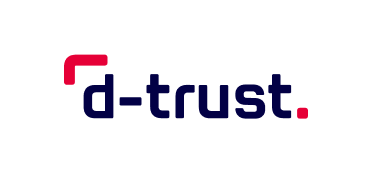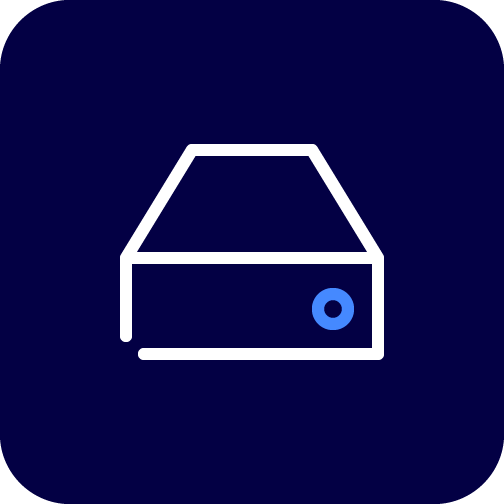
TI 2.0 – The Future of Telematics Infrastructure
Digital technologies are continuing to evolve. As such, so is the Telematics Infrastructure (TI). The term “TI 2.0” brings together future developments that are intended to deliver greater security, efficiency and convenience for TI applications in healthcare. Key concepts here include digital identities, a zero-trust security architecture and Healthcare Confidential Computing (HCC) for even better data protection.
What are the advantages of Telematics Infrastructure 2.0?
Digital networking in the healthcare sector enables data exchange between all healthcare providers, payers and patients. All important medical information is stored in the electronic patient file (ePA), ensuring that nothing is lost. Via the telematics infrastructure, eDoctor’s letters and ePrescriptions can be sent and received, as well as invoices, treatment, and cost plans. All this information is encrypted so that only authorised persons can access it. Currently, healthcare providers must authenticate themselves using the electronic health professional card (eHPC) or electronic professional card (ePC), or the practice/institution card (SMC-B), in order to access the respective documents. This will gradually change with TI 2.0.
- The eHPC/ePC and SMC-B ID cards will be replaced by digital identities. This will also enable healthcare providers to identify themselves on the move, for example via smartphone. Digital signatures are made possible through the TI remote signature.
- Healthcare practices and institutions also receive a digital identity: They are enabled to operate independently of cards and devices through HSM-B.
- Card readers and connectors, previously required to access various TI applications, become obsolete thanks to digital identities. With TI 2.0, a simple internet connection is sufficient.
- The Zero Trust approach elevates the security architecture of the telematics infrastructure to a higher level. Zero Trust is a security model that challenges and verifies the identity of all participants for every single action.
The digital network in healthcare is already functioning well—that much can be said today. The next task is to enable faster processes, facilitate better diagnoses, and further raise the level of data security. Thus, TI 2.0 stands for the evolution towards an even better telematics infrastructure.
What changes with Telematics Infrastructure 2.0
Everyday work will change in several ways for various professional groups in healthcare as a result of Telematics Infrastructure 2.0. Here, we outline the effects of TI 2.0 for three of the most important sectors.
From the GP to the dentist: Digitalisation in healthcare continues to advance. The goal of TI 2.0 is a telematics infrastructure that is independent of hardware and cards.
- “Digital identities” simplify everyday operations. Medical professionals can identify and authenticate themselves to the TI using a digital healthcare provider ID, for example via smartphone, instead of eHPC.
- This makes it even easier to sign or prescribe documents or e-prescriptions on the move using TI remote signature.
- If the practice also receives a ‘digital identity’ via the HSM-B, the SMC-B institution and practice card and the on-site card reader become obsolete.
- Insured persons can also receive a ‘digital identity’ on request, known as a HealthID.It supplements the functions of the electronic health card (EHC),
- so there’s no need for connectors and card terminals at practices. Practices can obtain TI access as a service from certified providers (TI gateway).
- Thanks to the zero trust architecture, data security is increased and data within the telematics infrastructure is even better protected.
From clinics to hospitals: Digitalisation in healthcare is progressing. The aim of TI 2.0 is a largely hardware- and card-independent telematics infrastructure.
- “Digital identities” simplify everyday operations. Medical professionals can identify and authenticate themselves digitally, for example via smartphone, instead of using the eHPC, within the TI.
- This makes it even easier to sign documents or electronic prescriptions remotely using the TI remote signature on mobile devices.
- If the hospital also receives a ‘digital identity’ via the HSM-B, the SMC-B institution card and the card readers become obsolete.
- Insured persons can also receive a ‘digital identity’ on request, known as a HealthID.It supplements the functions of the electronic health card (EHC).
- The connector will become redundant in clinics; high-speed connectors or a TI gateway will replace the current hardware infrastructure.
- Thanks to the zero trust architecture, data security is increased and data within the telematics infrastructure is even better protected.
The digitalisation of healthcare also affects pharmacies. The goal of TI 2.0 is a telematics infrastructure that is independent of hardware and cards.
- “Digital identities” simplify everyday operations. Pharmacists can identify and authenticate themselves digitally, for example via smartphone, instead of using the eHPC, within the TI.
- The TI remote signature replaces the electronic health professional card to enable, for example, legally secure signing of changes to e-prescriptions.
- If the pharmacy also receives a “digital identity” via the HSM-B, the institution card SMC-B and the card reader become obsolete.
- Insured persons can also receive a ‘digital identity’ on request, known as a HealthID.It supplements the functions of the electronic health card (EHC).
- The connector will become redundant. Pharmacies can obtain their TI access as a service from certified providers (TI gateway).
- Thanks to the zero trust architecture, data security is increased and data within the telematics infrastructure is even better protected.
Who uses the telematics infrastructure

The telematics infrastructure connects all healthcare providers, payers and their patients within the healthcare sector. However, not all patient data is equally accessible to all parties involved: Different regulations with varying requirements apply to different professional groups. The same applies to institutions. On the pages of our subsidiary, D-Trust, you can learn how to make optimal use of the opportunities offered by the TI in your professional field.
Fundamentals: What adjustments does TI 2.0 make?
Digital technologies are complex. The more they are developed, the more user-friendly they become. This is why Telematics Infrastructure 2.0 lowers technical barriers: This enables the development of new and innovative solutions.
Overview: What is next for TI 2.0?
The Telematics Infrastructure is under constant development by gematik (the National Digital Health Agency). With an ambitious timeline, it is enabling the complete digitalisation of healthcare provision in Germany. The next steps:
Digital identity
- The HealthID will become more user-friendly through biometrics
- TI remote signatures and digital identities for service providers will become available nationwide
- Digital identities will also be introduced for medical practices and organisations
Access to the TI
- Card terminals can also be used contactlessly
- Digital identities will mean service providers no longer need a card reader
- The number of TI gateway providers is increasing; they are offering new, additional services
Security architecture
- A binding framework for the use of TI services in the cloud is established
- The first applications based on HCC are implemented within the scope of Zero Trust
- TI applications are gradually migrated to Zero Trust logic
Looking to the future: Video consultations via smartphone
TI 2.0 enables communication with patients also outside the practice setting, for example via smartphone. One example: A doctor logs in from a home office to a video consultation app using her digital identity, and her patient does the same. Both can see and greet each other via the smartphone camera. The patient presents his concern and describes his state of health. This may be in follow-up care after a hospital stay. In the document section of the ePA, the doctor accesses the patient’s lab results and medication plan. Based on the available data and the personal conversation, the doctor summarises: the patient needs different medication, as the drug that has already been prescribed is not having the desired effect. Therefore, at the end of the video consultation, she decides to issue an e-prescription for her patient. Using the TI remote signature, the doctor can digitally sign the required prescription during the video consultation. The insured person can retrieve it using the designated app and redeem it digitally or in person at the pharmacy.
The TI remote signature allows qualified electronic signatures, for example on eDoctor’s letters, e-prescriptions, eReferrals, and eAUs (electronic sick notes). These signatures are legally binding. In this way, the TI remote signature accelerates workflows in the healthcare sector.
Frequently Asked Questions about TI 2.0
Digitalisation is fundamentally transforming many processes in the healthcare sector. Naturally, this raises questions. Here, we answer some of the most frequently asked questions about Telematics Infrastructure 2.0.
Digital networking via the Telematics Infrastructure (TI) enables data exchange between all healthcare providers. Telematics Infrastructure 2.0 refers to the developments coordinated by gematik (the National Digital Health Agency), which are aimed at increasing security, efficiency, and convenience when using TI applications. At the core of these developments are digital identities, a Zero Trust security architecture and Healthcare Confidential Computing for even greater data protection.
The easier and more secure the exchange of medical information becomes, the more successful the Telematics Infrastructure (TI) will be in the healthcare sector. By continuously developing the framework—managed by gematik (the National Digital Health Agency)— TI 2.0 increases the efficiency of processes, the security of data exchange, and convenience for all participants—including patients. Due to this increased efficiency, hardware components such as card terminals and connectors tend to become obsolete.
The enhanced Telematics Infrastructure, or TI 2.0 for short, facilitates access to TI applications by introducing digital identities. In the long term, these allow for the elimination of end devices and hardware smartcards such as the eHPC/ePC and SMC-B. The level of data security and data protection is further increased by transitioning to the Zero Trust security architecture.
TI 2.0 relies on secure direct communication via the Zero Trust security architecture, complemented by Healthcare Confidential Computing (HCC). Healthcare Confidential Computing aims to ensure the security of data and applications even during use, by isolating and encrypting them within secure enclaves at the hardware level. In combination, both concepts reduce potential attack surfaces. All data is protected at all times according to the highest security standards.
The various TI applications are being gradually migrated to Zero Trust by gematik (the National Digital Health Agency). TI gateway providers are also required to implement gematik’s specifications for data security and data protection—and thus Zero Trust. This service can be utilised by healthcare institutions such as medical practices, hospitals and pharmacies.













